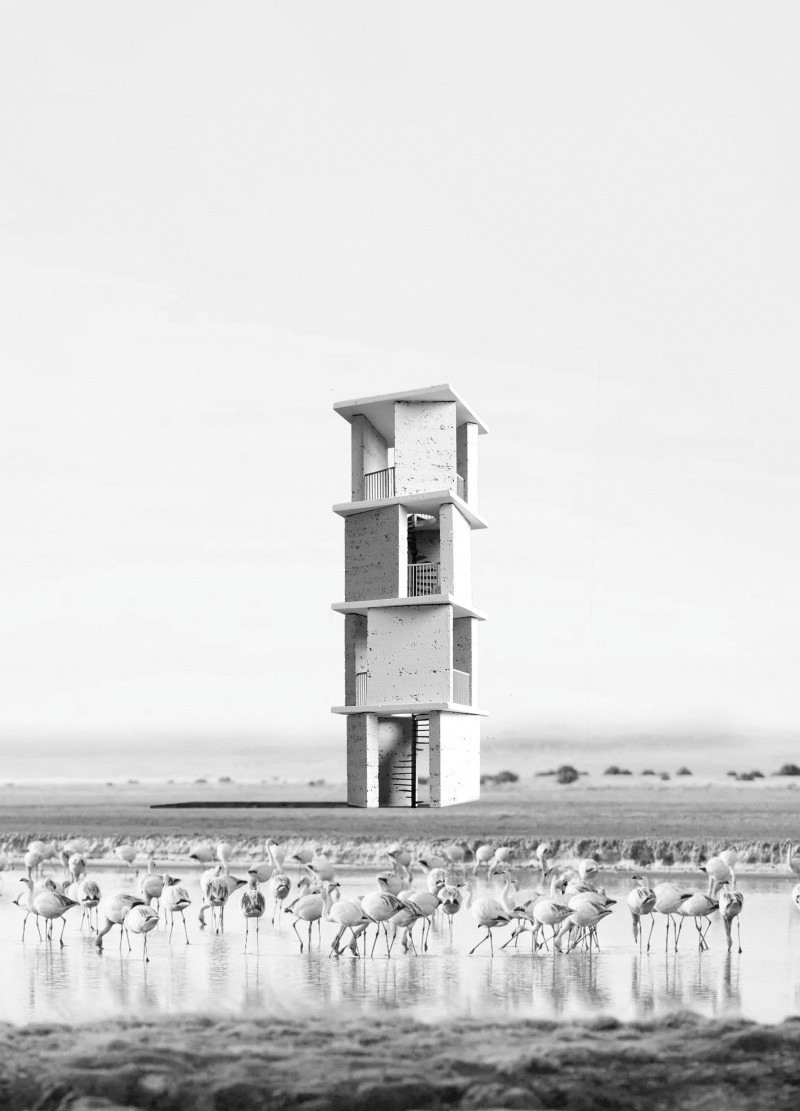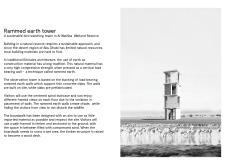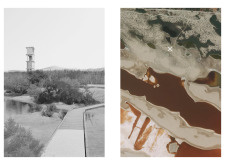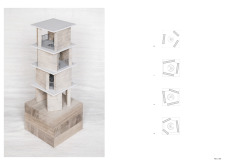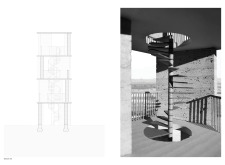5 key facts about this project
The Rammed Earth Tower is located in the Al Wathba Wetland Reserve and serves as a facility for bird watching. The design centers on sustainability and aims to harmonize with the local environment. By using traditional methods alongside modern practices, the project enhances the visitor experience while remaining mindful of the ecological impact.
Rammed Earth Construction
The tower features load-bearing walls made from rammed earth. This construction technique is known for its strength and durability, allowing for the effective use of locally sourced materials. By employing rammed earth, the design connects with the landscape, creating a sense of place that reflects the region's character.
Spatial Dynamics
Visitors access the tower through a centrally located spiral staircase. As they move upward, they are treated to different views of the wetlands at various levels. This arrangement invites exploration and encourages visitors to engage actively with their surroundings. The walls are designed to frame these views, offering moments of reflection amidst the natural beauty of the area.
Environmental Considerations
The design carefully incorporates shade and privacy within the structure. The thick rammed earth walls provide relief from the sun while concealing visitors from wildlife. This approach demonstrates a commitment to reducing human impact on the local ecosystem, allowing nature and people to coexist more peacefully.
Site Integration
The boardwalk complements the tower’s design by following a minimalist approach. It uses as few imported materials as possible, with timber framing anchoring the path to the ground. The gaps between the timber are filled with compressed sand, blending the walkway with the natural landscape. When the boardwalk crosses wet areas, it is elevated, creating a wood deck that allows for continued interaction with the surroundings.
At the top of the tower, the observation area provides expansive views, inviting visitors to appreciate the rich environments of the wetlands. This final detail emphasizes the project's aim to connect people with nature, encouraging a deeper understanding of the delicate balance within this habitat.


